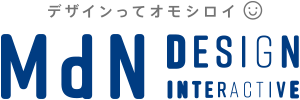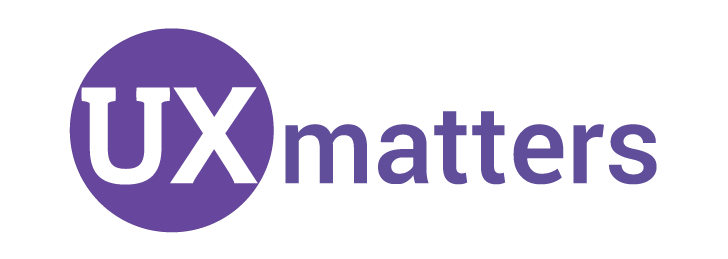Sociomedia UX Strategy Forum 2017 Fall
October 1, 2017. at CANVAS Tokyo(Chuo-ku, Tokyo)
The UX Strategy Forum this time will collaborate with World Usability Congress's "UX World Tour", the organization hosts most famous conferences in Europe. This is a part of their world tour to go around 6 cities in the world, with the slogan "Together we are better!"
We will welcome 6 speakers from outside of Japan and 2 speakers within Japan. This will sure will be an opportunity to learn latest UX methods, case studies, and way of thinking towards UX from UX leaders in multiple parts of the world.
Program
Simultaneous translation (English to Japanese and Japanese to English) will be provided
-
8:30 AMDoors open
-
9:00 - 9:10 AMOpening Remarks from Program Chair
-
Fostering empathy through scene-making in work style reformation
In the social environment changing drastically, many companies are forced to reconsider employees' work styles. The number of companies started work style reformation is raising. However, I see they are not turning out great in lots of cases. There are several bottlenecks on work style reformation, and one of the most common reasons is that although they settle systems and invest on environments first and employees, which is most important, do not have empathy in changing their work styles. As long as there is no agreement on changing, people will not switch the behavior that they are used to.
In this presentation, I will introduce a process to foster empathy and expectations in reforming work styles through picturing their dream work style in "stories" or "scenes". -
Proletarian Design
Even though various UX design techniques are told today in the world, most of them are based on evaluation indexes only about economical positive effects for business owners. In the system of capitalism, "user" becomes a synonym of "consumer," and the value of design will be measured by its craftiness for responding to the temporary requirements of the market.
In the field of business applications, it is also expected to improve operational efficiency and productivity by working on UX design, but what the system owners are seeking is task rationality which is limited to problem solving from the management view. There are few progressive approaches focused on humanity, creativity, or criticism actually.
Technology has two social vectors, "domination" and "liberation," in general, and design techniques are used for both of them. However, designs that overemphasize consumption contexts or designs that deflect the goal for administration purposes may break the spiral of mutual development between human and tools. It may be a factor to push our liberal arts backward.
As we hear keywords such as design ethics, speculative design, or information proletariat recently, what should we, as designers, define "good design?" Who should we empower with design? In this presentation, I will give some thoughts about the role that designers should be aware of and about design techniques for gaining user liberation.
-
Human Evolution and User Experience
In this talk, I will explain how human evolution has shaped the way how we respond to and interact with media and information technologies in certain ways. After that, I will explain how our understanding of such influences of evolution can be effectively applied to the design of successful ICT (information and communication technologies) products and interfaces. I propose that in order to design innovative IT products, we need to understand and develop the following four things (1. Evolutionary responses to technology form factors; 2. Sensor technologies to understand users; 3. Technologies manifesting machine’s wills and desires; 4. Social interfaces). Examples come from both my academic and industry works spanning from evolutionary psychology to current directions in smart media design by Samsung.
-
Using Behavioral UX and Usability Data to Optimize Websites
This session will teach you how to combine two typically separate sources of data (behavioral data and usability testing analysis) into a powerful single tool that helps you improve your website and increase conversion and ROI. The combination of the ‘what’ data of website activity, coupled with the ‘why’ data of usability testing, provides a complete 360 degree view into what’s causing poor performance, where your website can be optimized, and how it can be improved. This session is ideal for anyone who wants to combine the power of quantitative data with the insights provided by qualitative data to improve website results.
-
12:35 - 1:35 PMLunch break and Networking
-
How to design a "NASA product of the year" and our learnings out of it
We all are UX Designers. We do our best, but are there any indicators for success to create an awesome product and win awards? Are there indicators for a better user acceptance? In my speech I will describe how we developed the Dewetron’s NASA product of the year, where we focused on, and what are the key success factors for a great product. We all are able to create successful global products.
-
UX errors can kill people! Safety and documentation cannot be separated
The tools of current technical documentation practices are insufficient to serve the needs of users under stress. In many instances these well written and beautifully designed products expose your operations personnel to unnecessary risks that lead to performance errors. Only by incorporating the principles of human cognitive processes and behavior patterns in our behavior guiding documentation can we measurably reduce these risks. This applies to all behavior guiding documents such as:
- Standards
- Procedures
- Processes
- Guidelines
Usability engineering behavior guiding documentation has become an essential skill set for document developers.
We envision the day when no operator anywhere in the world has to perform a procedure that does not follow the principles of human cognition and behavior. Safety and Documentation cannot be separated. -
Designing Experiences Through Story
I will explain how story and myth are key to defining the human experience and how we can use story to guide the design of anything where human engagement with the product is key. Story can be manifested as subtext, and as narrative. Each informs design choices differently. Story as subtext is where story is developed as a manifesto for use by design teams to coalesce ideas and create unity and focus while not necessarily being 100% obvious to the end user, but has a sub conscience effect. Story as narrative is where the story is front and center in the experience design and unfolds to the user much like a book or movie. I will provide examples of each from projects I’ve worked on around the world.
-
Why Art matters to UX
Key Learnings:
- Color, texture, shape, music, and soft design engage users deeper into all UX.
- Movies , advertising, architecture have all use art to better contact with their users.
- Art engages all the senses which can be used to create a deeper UX experience.
Details:
I have spent over 30 years creating experiences that at their core use art to define and engage the user. Movies, Theme Parks, and Video games use the power of color, design and music to engage and captive their audiences ( users) I have most recently been involved in designing user experiences at airports, museums, and theme parks. were media savvy user expect to be engaged and entertained. This is where the application of art principles come into play. -
Skills Catalogue of Lessons Learned
Klaus will conclude the whole conference and presents a skill catalog of lessons on the day.
-
6:05 - 6:15 PMA Brief Announcement
-
6:30 - 8:30 PMSpeakers invite all participants to join them for an open discussion with snacks and refreshments
Event Details
Date
-
Oct 1 (Sun), 2017. 9:00 AM - 6:15 PM
(Doors open at 8:30 AM, reception party from 6:30 – 8:30 PM)
Place
CANVAS Tokyo
(Shinkawa 2-4-7, Chuo-ku, Tokyo)
Target Audience
Business leaders, managers / executives of organizations dealing with products and services, UX designers and others practice UX daily, and all people interested in UX
Capacity
150 people (Registration will close when the limit is reached)
Fee
We offer Early Bird discounts for those who register until August 31. Also we offer privileges for people who have previously participated in our UX Strategy Forums.
| Forum Ticket | 33,000 yen 30,000 yen (Early Bird / Past Participants Discount) * Early Bird is applied by August 31. |
|---|---|
| Party | 5,000 yen * Party tickets are not sold without a forum ticket. |
Registration and Payment
Click the "Registration" button and fill in the registration form. When your registration is complete, you will receive direct deposit payment information. Please note that registration forms or payment will NOT be accepted at the event site.
Organizer
Sociomedia, Inc.,World Usability Congress
Partner Organization
Uchida Yoko Co., Ltd.
Speakers
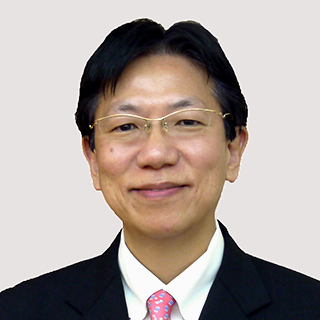 Nobuhiko Hirayama
Nobuhiko Hirayama-
UCHIDA YOKO CO., LTD. Corporate executive officer Manager of Intellectual Property Laboratory
He graduated Chiba University engineering department industrial design course. He has experienced UCHIDA YOKO CO., LTD. Space Design department, Interior Architects (United States) and UCHIDA YOKO CO., LTD. Environment Design Laboratory before the current position. He has had a role as a part-time lecturer about Design Interaction at Chiba University Graduate School from 2008 to 2010. His specialty of research and consulting is work style, intellectual creation, design management, etc. His writing works and lecture experiences about work style innovation are countless.
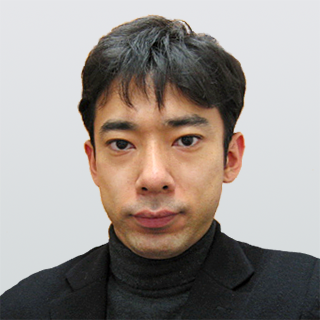 Manabu Ueno
Manabu Ueno-
UX design consultant, interaction designer, user interface designer, graphic designer, usability engineer, and programmer, Ueno has extensive experiences at web applications, mobile applications, desktop applications, business applications, etc., and takes a leading role in developing the design consulting methods at Sociomedia.
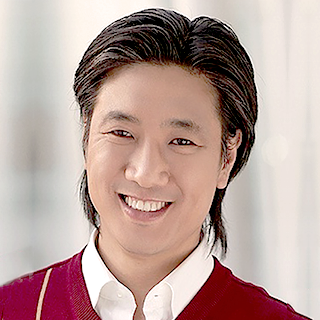 Kwan Min Lee
Kwan Min Lee-
Nanyang Technological University
Professor, Department of Interaction Science Director, Interaction Science Research Center Sungkyunkwan University Samsung Electronics, Seoul, S. Korea.
• Vice President, User Experience Group, Design Team, Visual Display Division (2013 – 2016)
• Director, Creative Lab (C-Lab), Future Strategy Team, Visual Display Division, (2014 – 2016)MAJOR LEADERSHIP & SERVICES
• Chair, Communication and Technology (CAT) Division, International Communication Association (ICA), 2012 – 2014.
• Vice President, Korean American Communication Association (KACA), 2005 – 2007.
• Associate Editor, MIT Press, Presence: Teleoperators and Virtual Environments. 2013 – 2014 Editorial Board Members. o Journal of Computer Mediated Communication o Media Psychology o Asian Journal of Communication o International Journal of Human-Computer Interaction o International Journal of Mobile and Blended Learning o Advances in Journalism and Communication o Human Communication Research (Previous) o Journal of Communication (Previous)
• Vice President, User Experience Group, Design Team, Visual Display Division (2013 – 2016)
• Director, Creative Lab (C-Lab), Future Strategy Team, Visual Display Division, (2014 – 2016)  Craig Tomlin
Craig Tomlin-
www.usefulusability.com
Craig Tomlin is a leading UX researcher and Conversion Rate Optimization consultant. He is a Certified Usability Analyst with over 25 years experience in UX research and conversion rate optimization. He has improved websites and apps for firms like AT&T, BlackBerry, Disney, IBM, Kodak, Virgin Media, Verizon, Zurich Insurance Company and many more. He is the former President of the User Experience Professional’s Association Austin chapter. He tweets and blogs extensively about UX, Usability and Conversion Optimization on Twitter @ctomlin and on his www.usefulusability.com website.
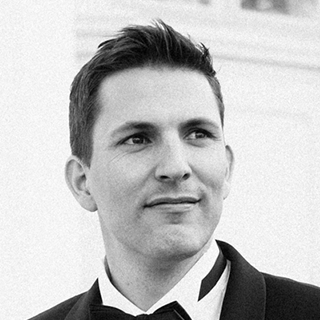 Johannes Robier
Johannes Robier-
Youspi
Johannes Robier has completed his studies in information design at the FH JOANNEUM in Graz in 2004. He was an employee in the global headquarters of Siemens Usability in Munich. He worked for „Evolaris research Lab” as User Experience Analyst. After that he founded youspi Consulting GmbH which is specialized on the services Usability, Customer Experience & Service Design. He earned the Customer Experience Management Certificate which provided him with a broader look on customer specific corporate development. Since then he has been participating as a lecturer at various conferences for Usability & User Experience on a national and international level. Since 2010 he is a lecturer at the Campus02 for Usability & Service Design. In 2013 he got the Certified Professional for Usability and User Experience (CPUX) – F (2013).
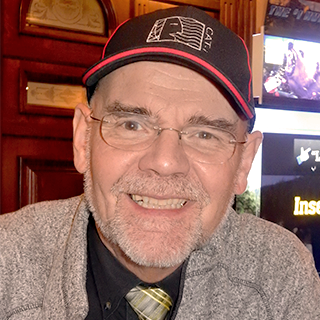 Klaus Hofer
Klaus Hofer-
CAT-i
Founder of Communications And Training international – CAT-i Professional associations
- APA – American Psychological Association
- STC – Society for Technical Communication
- WUC – World Usability Congress
- IABC – International Association for Business Communications
How it started 1970 – 1976 My early work in aviation and hospitals lead to my interest in cognitive and organizational psychology. I needed to understand: Why can well-trained highly motivated people make deadly errors? I wanted researched answers, not judgmental opinions. My ongoing studies and research in behavioral and cognitive psychology provide the basis for my professional life.
Transition 1977 – 1995 After too many years in too many universities (Australia, Canada, USA and Germany), I developed a full semester course and corporate workshop: “Applied Psychology for Technical Communicators”. Initially presented at the University of Massachusetts in 1986, I taught multiple variations of this course at several colleges, universities and corporations in North America, Asia, and Europe.
Current Work 1995 – 2016
I research, consult and teach. Together with specialists in Houston Texas, our team currently conducts the first series of usability tests of operating procedures in a live operating petrochemical plant. Our emphasis continues to be on applied human behaviour research into designing user centered documentation. Together with my team I continue our active involvement with the World Usability Congress and our partners in Austria and Switzerland.My Vision
My team and I envision the day when no operators anywhere in the world have to perform a procedure that does not follow the principles of human cognition and behavior. 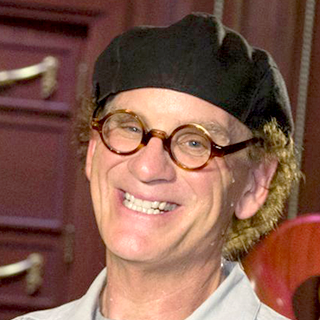 Joe Lanzisero
Joe Lanzisero-
Creative Consultant
Former Creative Executive, Senior Vice President, Hong Kong Disneyland & Disney Cruise Line Portfolios Walt Disney ImagineeringWith more than three decades of Disney experience, Joe Lanzisero is well equipped for his role as creative executive in charge of projects for Walt Disney Imagineering. Working with teams of artists, writers, architects and engineers, he serves as the eyes and artistic conscience of a project from conception through completion.
Joe was responsible for the creative development of the two newest ships for the Disney Cruise Line, and oversaw the teams that designed these new state-of-the-art ships (Disney Dream and Disney Fantasy) which launched in 2011 and 2012 respectively. Many features such as the innovative dinner show “Animation Magic” and the inclusion of an onboard water coaster (the AquaDuck) are cruise industry firsts.
At Hong Kong Disneyland, Joe oversaw the expansion of the park by more than 20 percent over a three-year period. The additions of three new lands – Toy Story Land, Grizzly Gulch and most recently, Mystic Point, adds more excitement and fun for guests of all ages.
Lanzisero began his Disney career in 1979 in Feature Animation (now Walt Disney Animation Studios), working on the animation, special effects, storyboarding and story development of numerous features, shorts and special project. He came to Imagineering in 1987 as a concept designer and was on the design teams for Disney’s Typhoon Lagoon Water Park at Walt Disney World, Critter Country at Disneyland, and Phantom Manor at Disneyland Paris.
In 1991, Lanzisero was promoted to senior concept designer and immediately plunged into the development of Mickey’s Toontown, the wacky cartoon “community” that opened at Disneyland Park in 1993. He also developed the concept for Roger Rabbit’s Car Toon Spin, a wild and funny dark ride that opened in Mickey’s Toontown the following year. Lanzisero also supervised the concept design for the Tokyo Disneyland version of Toontown that opened in 1996. Before joining the Tokyo Disneyland project team in 1999, he developed the concept for Fantasia Gardens and WinterSummerland, a pair of unique miniature golf courses at the Walt Disney World Resort in Florida. Another new venture, Disney Cruise Line, benefited from his work on children’s spaces and activities. And he was behind the conceptual design and development of DisneyFest, a unique Disney entertainment venue that traveled throughout the Far East and South America.
In 2001 Joe was promoted to creative vice president for Tokyo Disney Resort, charged with overseeing all design in Tokyo. For Tokyo Disney Resort, he worked on such attractions as Pooh's Hunny Hunt, Toontown, Critter Country and Splash Mountain. He did the concept development for Mermaid Lagoon and Arabian Coast in Tokyo DisneySea as well as many other projects. He directed the creative development of Tower of Terror attraction and Monsters, Inc. Ride and Go Seek.
In March 2007, Joe was promoted to creative senior vice president with the added responsibilities of overseeing all design for Hong Kong Disneyland, including leading the design of a major three-land expansion of the park. A member of the first graduating class of the Walt Disney Character Animation program at California Institute of the Arts in 1979, Lanzisero developed his artistic talents with old-time Disney professionals. He applied his education as a teacher at the Otis Art Institute and in the animation industry before joining The Walt Disney Company.  Monika Gerber Lanzisero
Monika Gerber Lanzisero-
Walt Disney
To be updated
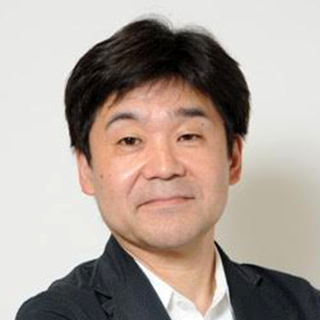 Toshikazu Shinohara
Toshikazu Shinohara-
President, Sociomedia, Inc.
Toshikazu leads Sociomedia, a User Experience Design Consulting company. Toshikazu himself does UX strategy consultant work for innovating organizations, using his experience in consulting for organizations/teams, IT-startups, and his comprehensive expertise in UX, IT, and design.
Toshikazu has been organizing “DESIGN IT! Conference / Forum / magazine” which were efforts to explore design and IT, since 2005, and “UX Strategy Forum” which tries to find ways to put UX in the center of the organizational strategy, since 2014. He is working to expand the Japanese UX market, through introducing newest trends and research from Europe and the U.S.
He inaugurated as the technical advisor of Japan Ministry of Internal Affairs and Communications in 2017 and dedicates himself to "service design thinking" enlightenment activities for the reformation of Japanese e-government.
Media Partners




